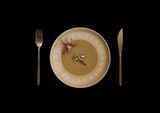Author: Rositsa Tashkova, Master of Molecular Biology and Microbiology
The article is based on materials by Marie-Claude Delahaye - a professor at Pierre and Marie Curie University in Paris. Works in the field of genetics and cell biology. She is the author of numerous scientific publications and books on women, pregnancy and motherhood.
There is no other period in a woman's life that can be compared to what happens to her body and psyche during pregnancy. The life that develops in her changes her with each passing day - this is a reality from the first day of conception, but it is most noticeable in the last months of pregnancy.
In this article, we will look at what these changes are, but also what happens invisibly in the belly of the future mother. This will be a brief description of your baby's journey from one cell to it's own cradle at home.
The beginning
Fertilization is most likely to occur with sexual intercourse in the three days before ovulation - a moment that occurs at different times for each woman, and even with each individual menstrual cycle, but most often it occurs 2-3 weeks after the onset of the last menstruation.
With ejaculation, between 60 and 500 million spermatozoa are released, which fall into the cervical mucus (which in the period around ovulation has a consistency and composition that support the survival and movement of spermatozoa) and enter through the cervix in 2 to 10 minutes. Their path to the egg passes through the uterus and fallopian tubes, where the two sex cells occur.
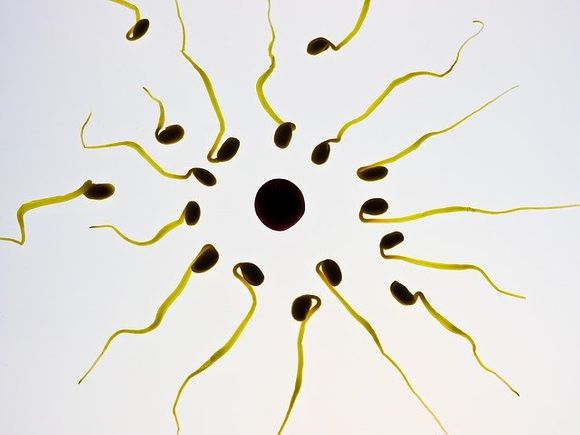
Only about 100-200 spermatozoa manage to reach this covenant place and only 1 - to performfertilization.
The first days of a new life
With the fusion of the egg and spermatozoa, the sex and all genetic characteristics of the child are determined. The sex of the child depends on what sperm has fertilized the egg - if he wears a sex X chromosome, then we will have a baby girl if she carries a Y - a baby boy.
The first week of life of our future child passes into intensive cell division and movement from the place of fertilization - the fallopian tube, to the uterus and implantation in its mucous membrane. The latter occurs somewhere between the 7th and 10th days of fertilization.
From this part of the fetus, from which the placenta will then develop, begins secretion of the hormone gonadotropin, which supports the secretion of progesterone from the yellow body in the ovary - a condition that is necessary for the retention of pregnancy.
First trimester of pregnancy

First month
Congratulations! On the second week after fertilization and about 4 weeks after the onset of the last menstruation, you are pregnant in the first month.
Already in the first week begins the formation of embryonic appendages - these are the placenta and umbilical cord, At this time, the mother does not know if she is pregnant and has no symptoms. The pregnancy test is good to do after at least one day of delay of menstruation to give a more accurate result, and the most accurate is the blood - but let us have patience [ref. 6].
At the end of the second week (on the 21st day of fertilization), the fetus will have reached the dizzying dimensions of... 1.5 millimeters, and only the next day will already be 2 millimeters. At that time, a heart had already formed, of course very imperfect, but still beating.
It has been 4 weeks since fertilization and the baby already has even blood circulation, as well as conceptions of hands and feet. At the end of this week the head is clearly separated, but the little one also has a tail, which will then disappear. It has the shape of a 5mm comma.
When the menstruation of the pregnant woman is delayed by 2 weeks, the life developing in her already has conceptions of all systems and organs, including a smallpimple, from which his heed will develop.

The future mother begins to experience the characteristic malaise [ref. 1]:
- Itchy and painful breasts, itchy grains that become somehow more convex, and the areolas around them become enlarged and darkened.
- The uterus acquires the size ofa mandarin , and compressedcervical mucus forms a "stopper" that protects the uterine cavity from entering anything.
- Nausea manifests itself with increasing frequency, especially in the morning, and appetite disappears.
- Insomnia occurs, or a strong desire for an afternoon nap.
- The pregnant woman feels tired and nervous.
- Even at this early stage, frequent urge to urinateappears , which will disappear soon when the uterus begins tolift upwards, but will reappear as pregnancy progresses.
- The game of hormones also affects the mood , but it is temporary and patience and optimism are needed. Of course, if dark thoughts persist, it can also be about postpartum depression [ref. 2], which sometimeshappens even before birth.
Second month
At the beginning of the second month the baby is 5 mm long, and at the end of it - is as many as 30 mm. This is a period of intensive development and growth. By the end of this month of pregnancy, the baby will already have most of his organs, his face will take shape, and it will now look like a man, not a tadpole.
When the developing baby is now 5 weeks old, his heart is still located outside his calf as it hasgrown.

Symptoms of pregnancy from the first month become more palpable and the culprit for this is the hormone chorionic gonadotropin (CHG) - the same one in whose presence pregnancy tests "recognize" whether the woman is pregnant [ref. 5].
Some other disorders appear ,such as constipation, increased salivation and swelling of the legs.
In the 7th week of the baby's life, it begins to move - although the mother still can not feel this - it isonly 17-22 millimeters long.
At the end of the 10th week after fertilization, the heart tones of the 3-centimeter baby can now be heard with the help of Doppler.
Third month
This is the month in which the disorders will begin to gradually subside, and the fetuswill already be called a fetus or fetus (from here and "fetal morphology", which examines the development of the organs of the fetus [ref. 7]).
At the beginning of the month, the little baby has a huge head, relative to the size of her body, but over time her growth gradually slows down and it acquires the appearance of a real man. By the end of the month its dimensions will reach 12 cm and move, but the mother will still not feel this.
In the first week of the thirdmonth , the baby is already40,000 times larger than the egg from which it originates.
In the first weeks of this month, the baby's eyelids are already covering the eyes, which will remain closed for months. The face is getting better and better. Internal organs continue to develop and move into the baby's body.

But if the expectant mother is stressed, the rising levels of adrenaline in her body pass into her baby's small organism and accelerate his heart rate. At this time of development, his normal heart rate is 110-160 beats per minute.
At the beginning of the third month, the baby's small intestine still can not fit into its tiny abdominal cavity, so they are located curled inside the umbilicalcord , where there are also the vein and artery connecting the two bodies - to the mother and the baby. Later, they normally take their place in the baby's tummy, but in rare cases thismay not happen, and then we talk about malformation. [ref. 8]
By the middle of the third month, the development of the baby's brain is extremely turbulent, the fetuses of permanent teeth are bet, and its weight is 18 grams at "height" 7.5 cm.
A week later, the baby's weight is already 28 grams and is 1 cm longer.
About the 10th week of fertilization, the uterus no longer fits into the pelvic cavity and is located higher - in the abdominal cavity. Thus, it stops pressing on the bladder and the urge to urinate is no longer so frequent. Gradually, nausea decreases and appetite appears, especially for sweets. Therefore, from this point the mother should monitor her weight and proper nutrition, because she can suddenly gain a lot of excess weight.

In the 11th week after fertilization - the baby's first delicatehairs appear - in the area of the eyebrows and upper lip.
The mother's heart beats faster - by about 4-8 beats per minute more often, The hormones have stopped the natural process of hair fall, which will lead to apparent hair loss 2 to 6 months after birth, when the natural fall will resume, but will also be covered with all hairs with which we had to separateduring the 9 months of pregnancy.
Read more in the article .
At the end of the third month and the first trimester, the baby already has even miniature claws, it shrinks fists, makes suction movements with a mouth and swallows a little of the liquid in which itswims, and the boys already have a small sexual member.
The mother's tummy is already starting to take a more round shape, but this will go unnoticed by most people.
Second trimester of pregnancy

Fourth month
The fourth month of pregnancy is extremely exciting. During it, the baby's growth rate will reach its maximum ! Moreover, now all its systems and organsthat were built in the first three months will begin to function together.
Nausea and fatigue will disappear and give way to the joy and realization that the baby is really a reality and lives somewhere in there.
In the 15th week after fertilization, the baby is already 16 cm long, weighs 135 grams, and his foot is 2 cm long!
After a week, the baby's body is covered in fine fluff - called lanogo [ref. 9]- and the first movements are already felt by themother.
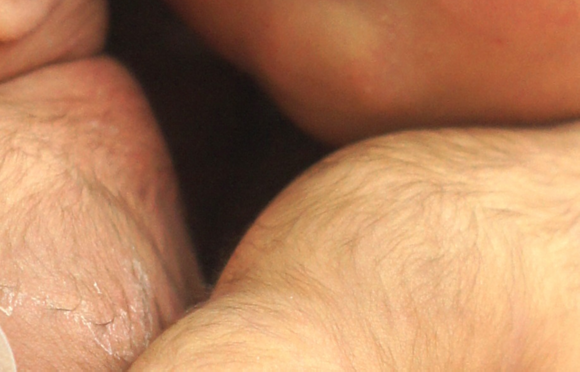
Mother's malaise is associated with the influence of large amounts of progesterone, which relax smooth musculature and can lead to constipation and heartburn.
When the baby is 20 weeks old , it already weighs 240 grams and is20 cm long. Its movements become much sharper, and it has acquired its final number of neurons in the brain. Its skin is still transparent, has nails and a little hair.
At the end of the fourth month, the activity of the mother's thyroid gland is so increased that her body temperature begins to rise, and the pregnant woman begins to sweat more thanusual, so lighter clothes and cool places are preferable, especially in the summer.
Fifth month
You're in your fifth month. Baby is already 22 cm and weighs 335 grams and likes to sleep and kick.
At this time, the baby sleeps 16-20 hours a day, and when he does not sleep, he likes to stretch legs and kick mom, whether she is awake or not.
Last month, his movements felt like fluttering a butterfly in the abdomen, but now they can be noticed even as a slight bump on its surface.
In the fifth month, breathlessness and dizziness may occur in the mother - due to the squeezing of the lungs from the growing uterus, as well as due to the increased carbon dioxide content in the woman's blood - she breathes for two.

During this period, female babies already own 6 millioneggs .
By the middle of the month, the babyis already sucking his thumb - and his chest is performing increasingly frequent breathing movements - he does not use his lung to breathe, but trains for the day of birth and arrival in the outsideworld, when oxygen will already come from the air, not from mom's blood.
In the mother, new symptoms of pregnancy begin to appear, due to the increased blood mass, 25% of which goes to the placenta:
- Low blood pressure, which leads to dizziness and dizziness;
- Bleeding from the nose and gums;
- Appearance of hemorrhoids, varicose veins;
- Numbness and heaviness in the limbs.
All these phenomena are also characteristic of the last trimester of pregnancy.
In this period, the load on the kidneys has increased significantly, and it is necessary for the mother to drink plenty of fluids to support their function.
In the second half of this month, the baby's eyes continue to develop, but we will find out what their color is some time after birth, at the moment the eyelids are still closed, but already have eyelashes.
The baby for now grows mostly in length and is quite weak. Wernix is retained on the fine fluff (lannogo) and has many important functions: it protects the skin, prevents water loss, plays an important role in thermoregulation and contributes to innate immunity. It protects the fetus from damaging substances found in the amniotic fluid, especially urea and electrolytes. [ref. 9]

Many parents understand their child's gender in this month, but new technologies (4D, fetal morphology) can allow gender determination even at the end of the third month. Of course, the baby may be "hiding" for a long time and not take a position to reveal whether it is a boy or a girl.
At the end of the month, the appearance of heartburn is almost inevitable, internal organs are displaced, the mother's diaphragm is lifted upwards, the stomach shifts to the side, and the lower vertebrae slightly open. But it is not scary - with childbirth, the discomfort will disappear and everything will come into place.
Sixth month
The future mother's tummy can no longer be hidden - life in it declares herpresence categorically.
At the beginning of this month, the baby has already reached a length of 30 cm and weighs 650 grams.
It moves tirelessly - it can make up to 60 movements per hour when awake, spinning and pushing mom's belly with her foot, arm, head or back.
It learns to recognize the voice of its mother , as well as the music ithears. Loud noises stress it out and in this period it should already be taken into account. Noisy gatherings and parties are not preferable.
Meanwhile, the mother begins to suffer from insomnia and muscle cramps- and the baby does not help to relieve herself - at night he doesnot want to sleep at all, but prefers to go crazy in mom's belly.
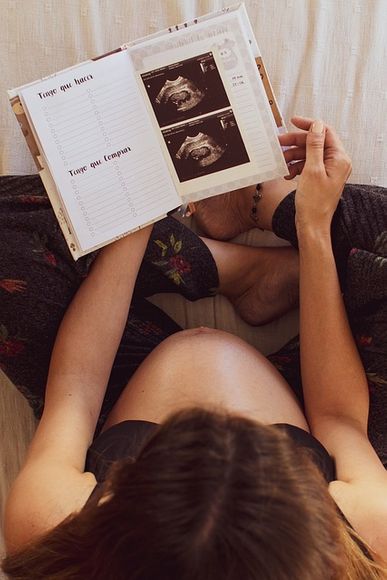
It should avoid too salty foods, because its special condition in combination with a lot of salt that holds the water can lead to the appearance of a diet rich in fat and salt, also harm the baby itself, delay its development and predispose it to metabolicdiseases later in life [ref. 11].
In addition, it inhales and exhales amniotic fluid, which promotes the development of the bronchi.
By the end of the sixth month, the mother begins to accumulate fat, gaining 350-400 grams per week, 60% of them for the baby and placenta. Nutrition and movement should be reasonable, relative to the condition of the pregnant woman and the recommendations of the doctor who monitors her pregnancy.
In the last week, the baby already weighs 1 kilogram! Now begins covering the nerves with myelin - a shell that allows directed course of nerve impulses without them dissipating. This process lasts until the 20th year of a person's life, but is most active in the first three years, when basic knowledge and abilities are absorbed, as well as related thought.
Third, final trimester of pregnancy

Seventh month
At the beginning of the seventh month of pregnancy, the baby is 34 cm long and weighs 1.5 kg. It is already very vital and mobile - but it is too early to appear in this world - there is more to get from mom andthe tranquility of intrautere life.
It reacts by moving stimuli, which are pleasant or unpleasant to him, but it does soreflectively, not with the power of thought, as one is still lacking.
Over the next week, the baby is already starting to feel tastes . It is assumed that substances from the mother's food penetrate theamniotic(amniotic) fluid [ref. 12] that give it a certain taste, and this probably helps the development of this senses in the baby.
Here's what happens to the mother-to-be this month:
- The pulse is accelerated by about 12 additional beats per minute;
- A dark feature appears from the navel down, through the abdomen, which after childbirth will disappear;
- Breasts are prepared for breastfeeding, and it is possible to leak small amounts of colostra - this is the first milk with which the baby will be fed and is rich in antibodies;
- Due to the large size of the uterus, symptoms such as breathlessness, heaviness and heartburn intensify.
In the 30th week after fertilization , the testicles of the boys go down to the seminal bags. In some boys, it can happen even at birth that one testicle has not come down, so it is necessary to intervene a doctor and prescribe treatment ofthe condition at the appropriate time of the child's development.
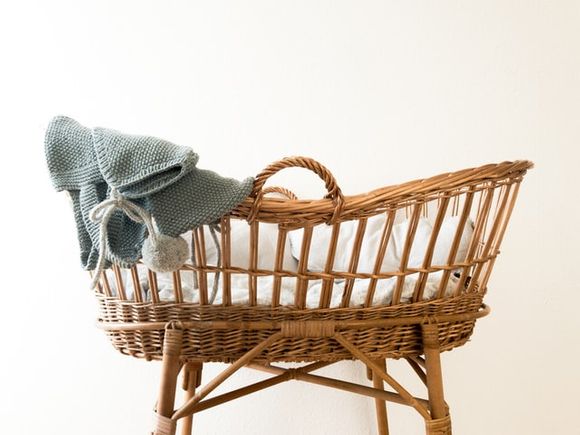
In the following week, the baby already weighed 1 kg 700 grams - in the uterus begins to become narrow. This interferes with the frivole bounces, and the baby is left to turn in the appropriate posture for normal birth - some babies soon take a position upside down.
At this time, the skin of the mother's abdomen is already quite stretched, and the navel can pop forward, acquiring the appearance of a knob. Bent under the pressure of the uterus diaphragm, can cause discomfort, sometimes pain in a sitting position. In this case, it is good for the mother to get up and raise her handsupwards, stretching and inhaling.
Eighth month
The baby started the eighth month with a length of 40 cm and a weight of 1 kg 900 g. His skin already acquires a pink color, but it is covered with a dense layer of verix.
At this point in development, with the help of the placenta, the baby collects calcium from mom's body to build healthy bones. [ref. 15]
Just a week later, the baby now weighs 2 kg 100 grams and has grown by 2 cm. It will be discarded immediately after birth. Coloss drive has a special role in this, as it acts as a light cleansing agent.
With some suffering of the fetus (for example, infection), its intestines countered and discharged mekonium into the amniotic fluid. If there are suspicions of a problem with the baby, a study of the amniotic fluid (amnioscopy) can be carried out and when a mekniium is found in it, a birth can be triggered to end the baby's suffering and preserve his life.

Now is the time for the baby to turn upside down (most often with his back to the left) if he has not already done so.
By the middle of this month, the mother may experience sporadic contractions that are not as common and are not at regular intervals as in contractions suggesting that childbirth begins.
If the baby is born at the end of the eighth month , it will not be put in danger- 90% of premature babies at this point in pregnancy survive, and in the rest there is some other reason to perish, but not the birth itself - rather the cause of it.
The gentle fluff that covers the baby (lanugo) begins to fall, and the baby pees 2 tablespoons of urine every hour.
How does the mother feel at the end of the eighth month?
It can experience muted pain, withdrawal and heaviness low in the abdomen and pelvis, which is caused by its stretching joints.
Shortly before birth, the baby goes lower into the pelvis and this leads to a feeling of heaviness, strongly pulling down.
Ninth month
At the beginning of the last month of this exciting journey, baby is already 46.5 cm and weighs 2 kg 650 g.
The center of the mother's weight has changed a lot, which changes both her posture and her dexterity.
In the second week of this month, the baby is already about 2 kg 900 g. It is located in mom's ovine belly in a pose from which she probably wants to come out, if she can - with her head down, arms crossed on her chest and legs tucked to the body.
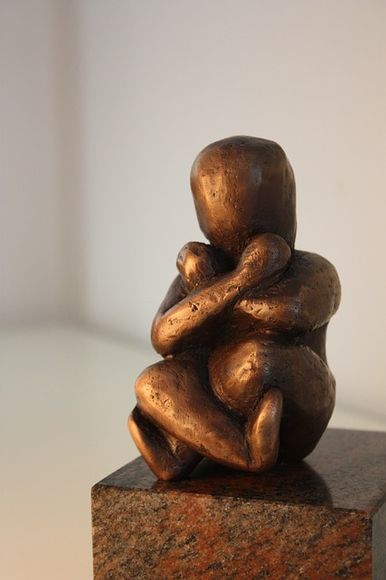
Childbirth can occur at any time when the mother is 38 to 41 years old.
In the 40th week of the last menstruation (when has it been so long?) and the 38th week of fertilization, the cherished moment is here!
The birth of the baby
The baby is about 50 cm long, weighs about 3 kg 300 g.
Once he is born, his blood circulation will change - until now the blood has not had to carry oxygen from the lungs, but now everything is different - he will have to breathe on his own. The circle connecting the heart to the lungs will begin to function at full strength.
The lungs unleash their full potential until the 3rd day after birth, when all alveoli are already open.
Of all the organs and systems, the brain is the least developed - this organ is about to become the most perfect in the course of the life of the newborn.
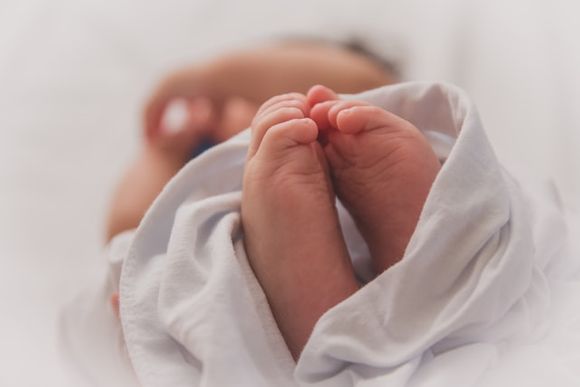
And what happens to the future mother when the birth is coming?
- It can suddenly feel severe fatigue and nausea, due to hormonal changes that occur at the end of pregnancy to begin childbirth.
- The mucous stopper will fall off - this can be done between one and three days before birth.
- An unexplained gust of cleaning and tidying may occur. Strange as this may sound, it has happened even with the author's mother, as well as at the birth of her :) This is instinctive behavior and is characteristic of all mammals, which also prepare and clean their nest or refuge as soon as the moment for the female to give birth approaches.
Well, it's time to welcome a new life! The journey was worth every trepidation, every tear of joy or anxiety, because the miracle has been fulfilled - a new man has come into the world!






